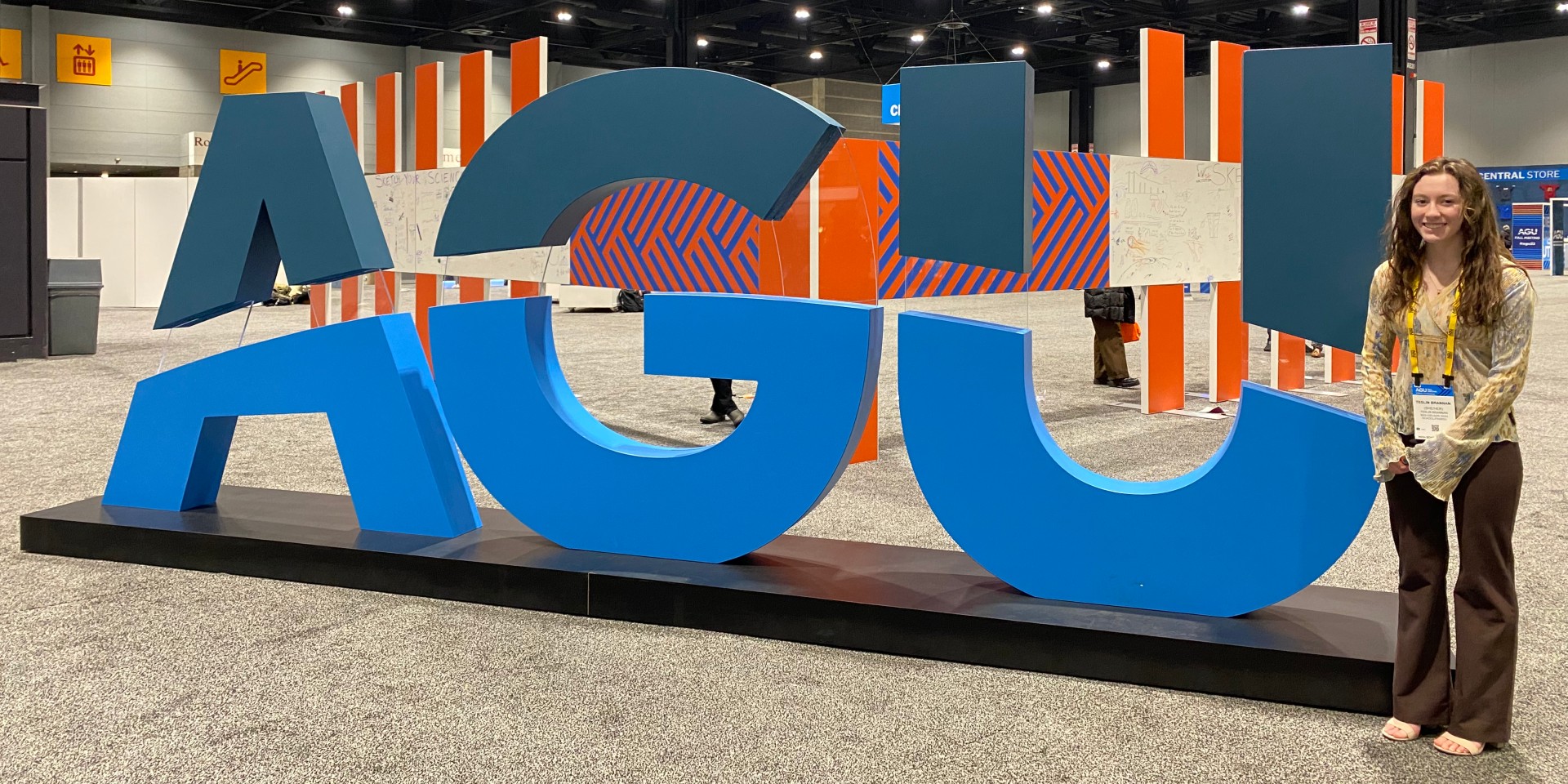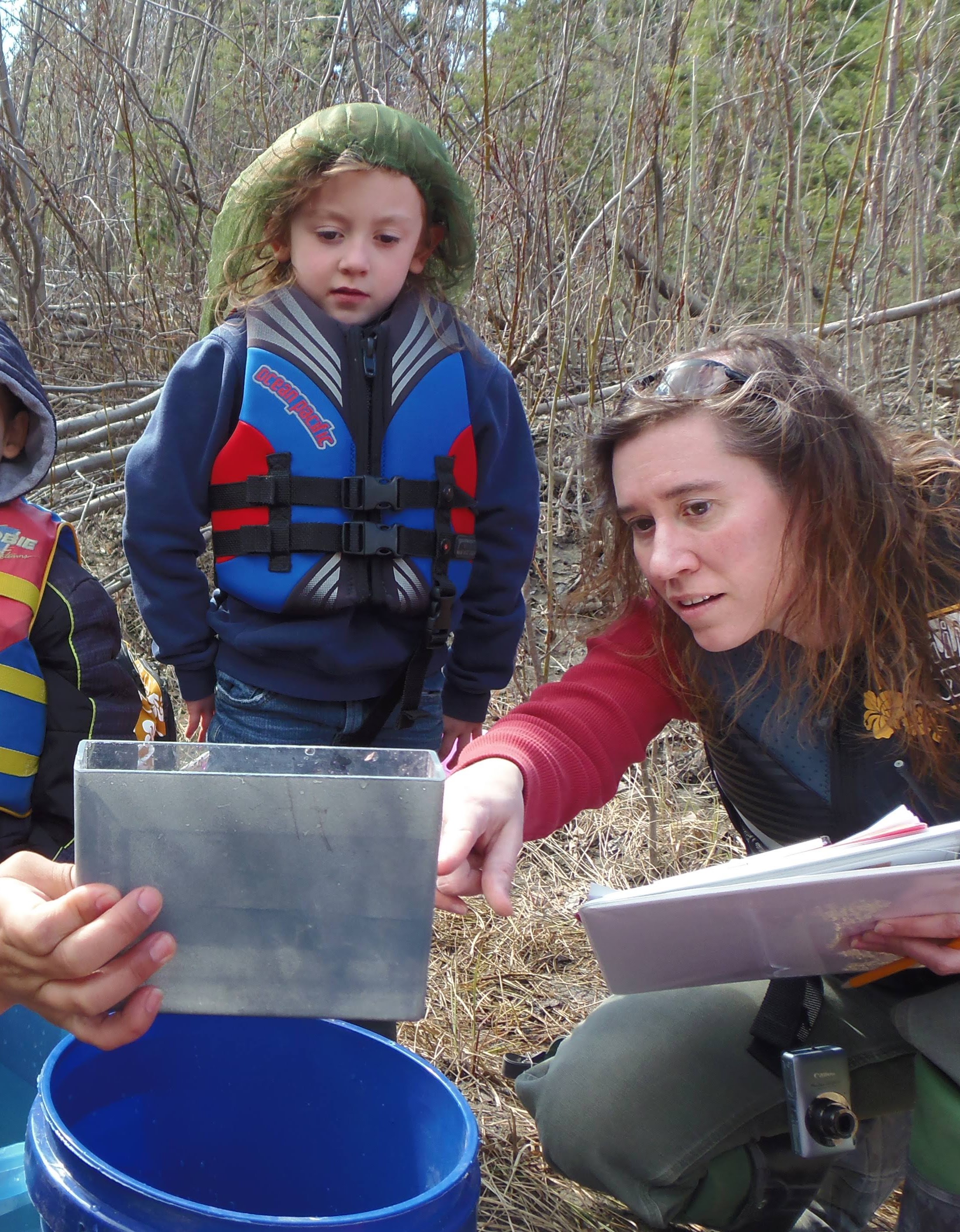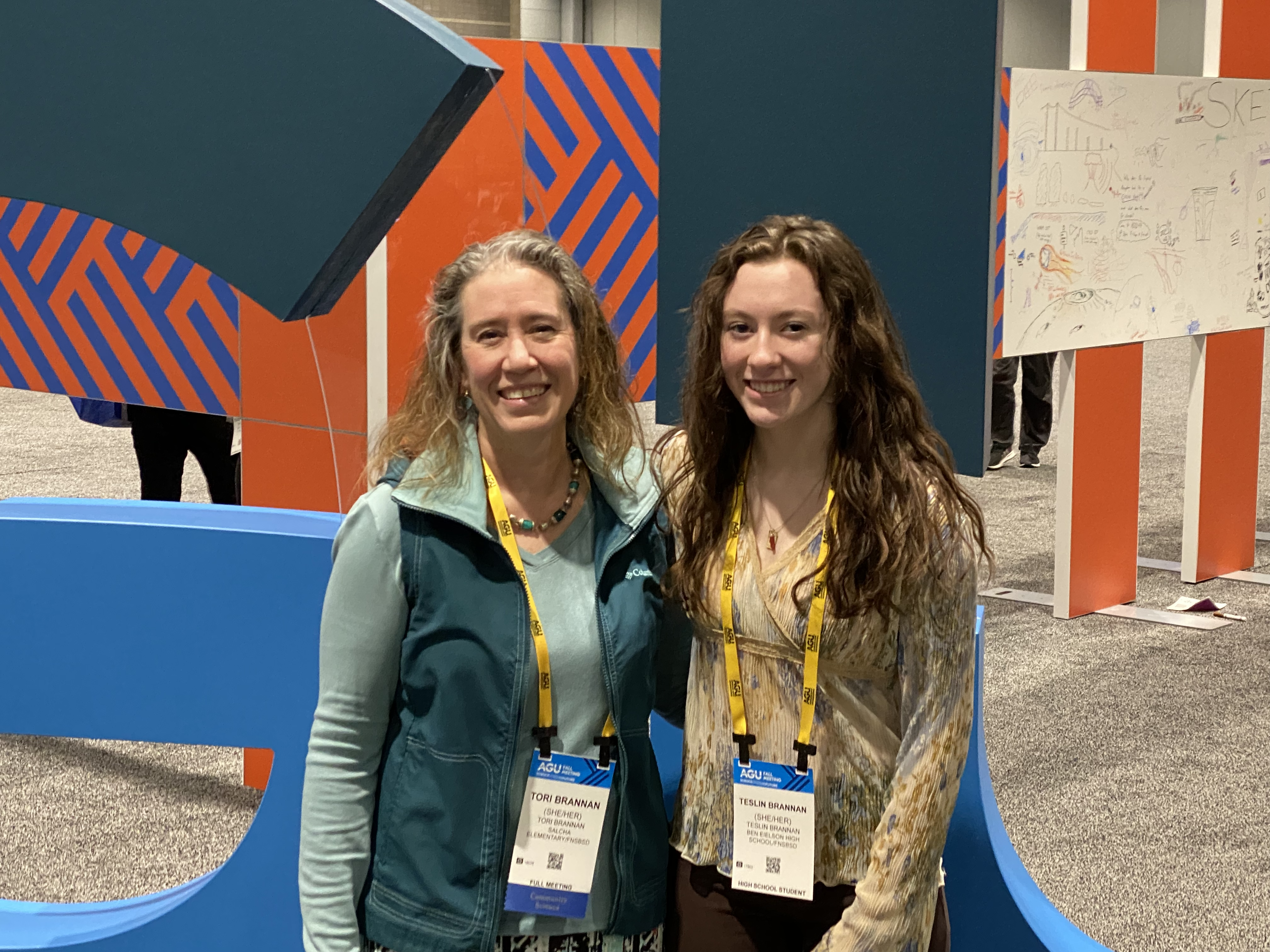Stars and STEM Stories
Elementary students partner with a local watershed association in decade-long scientific study

Above: Teslin Brannan at the 2022 American Geophysical Union (AGU) 2022
Salcha is a rural community in Alaska’s interior, located on a tributary of the Tanana River. The region is known for its excellent fishing. Arctic grayling, burbot, northern pike, king and coho salmon all swim here, and local anglers can choose from a variety of habitats in the Tanana’s drainage area, from rivers to roadside ponds to spring-fed streams.
When a $188M bridge and levee project on the Tanana River cut off the head of a nearby slough in 2011, some Salcha residents grew concerned. Many families fished on the Piledriver Slough. How would the project affect the health of this shallow lake system and its fish populations?
To monitor the environmental impact of this new infrastructure on fish passage, habitat, water quality, beaver activity and invasive plant growth in the slough, the Tanana Valley Watershed Association (TVWA) proposed a 10-year scientific study. Recognizing the opportunity to promote citizen science, the association asked Salcha Elementary to be its partner in the project. Salcha students, ages five to twelve, would take samples and make observations three times a year at eight sites along the slough, working alongside TVWA staff.
 Tori Brannan, at the time a kindergarten/first-grade teacher at the school, was not surprised by this idea. “In rural Alaska, schools are the hub of the community. By partnering with the school, you are partnering with the community,” she says.
Tori Brannan, at the time a kindergarten/first-grade teacher at the school, was not surprised by this idea. “In rural Alaska, schools are the hub of the community. By partnering with the school, you are partnering with the community,” she says.
The school approached the partnership with enthusiasm. Salcha Elementary teachers and students, administrators and community members gathered to train in water quality and fish survey protocols, to map a project curriculum, and to develop program and structural supports for a longitudinal study.
The Piledriver Slough study began soon after in 2012. Tori and her daughter Teslin (pictured right), a kindergarten student that year, were among its earliest participants. Over its duration, the young citizen scientists saw an increase of six degrees Celsius in the eight-site average summer water temperatures in the slough. “Knowing that fish species have preferred water temperatures for egg viability, habitat, and spawning, this is concerning,” says Teslin.
Tori and Teslin remained involved through the study’s completion in 2021. Tori eventually became Salcha Elementary’s principal, leader of the school-wide study, and a GLOBE Trained Educator; she managed the logistics for getting the children to collect 1200 data points over multiple years at sites miles from the school. Teslin moved on to secondary school, but she and fellow student Rusty Baker returned each year to collect data and teach juvenile fish identification and GLOBE hydrosphere protocols to the younger scientists at Salcha Elementary. Teslin finds value in GLOBE. “GLOBE is something that everybody can use,” she says. “You don’t have to have a degree; if you care, you can contribute, and scientists can use the data worldwide. It’s one of the first small steps you can do in making a difference.”
The experience of participating in community-oriented citizen science has been empowering. The skills Teslin and Rusty gained through their involvement with the study led to paid summer internships with TVWA while still in high school. Now in eleventh grade, Teslin is considering a STEM career. “The ten-year study of Piledriver Slough helped me realize the long-lasting effects of our actions on the environment starting at a young age. It introduced me to a subject I love and a career I hope to pursue as a climate scientist,” she says.
 Both Tori and Teslin presented their findings (pictured left) from the study at the American Geophysical Union (AGU) 2022 Fall Meeting in Chicago, Illinois. Teslin presented a poster as part of the BRIGHT STaRS program, while Tori served as part of a panel focused on engaging diverse learners in arctic science. Subsequently, Teslin and Tori have presented at the Alaska sections of the American Water Resources Association and the American Fisheries Society conferences.
Both Tori and Teslin presented their findings (pictured left) from the study at the American Geophysical Union (AGU) 2022 Fall Meeting in Chicago, Illinois. Teslin presented a poster as part of the BRIGHT STaRS program, while Tori served as part of a panel focused on engaging diverse learners in arctic science. Subsequently, Teslin and Tori have presented at the Alaska sections of the American Water Resources Association and the American Fisheries Society conferences.
Why do Tori and Teslin feel compelled to share their experience of the study with others? Tori explains, “If it hadn’t been for the students, staff, and community of Salcha participating in this study and Teslin and Rusty telling the story of our slough, it might not have been told. With so many dams and levees affecting waterways, it is a story that needs to be told. If we don’t tell it, who will?”





